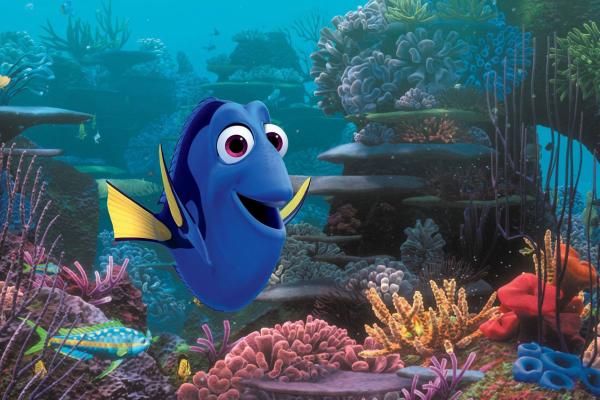During a recent interview, Krista Tippett, writer and host of faith and culture podcast On Being, had this to say on the concept of hope versus optimism:
“For me ... optimism sounds like kind of wishful thinking ... hope as a force, as a resource, is reality-based. It sees the darkness; it takes that seriously. It sees the possibility for good and redemption, and takes that seriously, and it’s a choice ... it’s an action. It’s something you put into practice.”
It might seem odd to take a powerful quote like this one and apply it to Finding Dory, Pixar’s sequel to its 2003 hit, Finding Nemo. It is, after all, an animated kid’s movie about talking fish. But, as with so many of the studio’s films, Finding Dory is also a movie with surprising emotional depth, one that’s just as much about the power of active hope as it is about sight gags and cute critters.
Set one year after Finding Nemo, Finding Dory re-introduces the aquatic trio of clownfish Marlin (Albert Brooks), his son Nemo (Hayden Rolence), and their memory-challenged friend Dory (Ellen DeGeneres), a Blue Tang. When the film opens, they’re living a happy (if a little scatterbrained) existence on a coral reef. One day, Dory is jolted by a sudden memory of her long-lost parents, and sets off with her friends on a quest to find them, a journey which takes the group to Dory’s birthplace: the Marine Life Institute, an animal rehabilitation center.
In some ways, the film is a retread of familiar territory. The rehabilitation center, which doubles as an aquarium, feels like an expanded take on the first film’s fish tank scenario, and employs similar characters and situations. Composer Thomas Newman also returns for a new approach to Nemo’s gorgeous score, with less memorable results.
But thematically, Dory is just as strong as its predecessor. By taking a closer look at its title character’s positive attitude, director and co-writer Andrew Stanton shows audiences that Dory isn’t simply optimistic, but hopeful and resourceful.
Dory looks for ways to accomplish her goals that others may not see, and her refusal to give up is based more on determination than just always looking on the bright side (bolstered, of course, by DeGeneres’ loving, authentic performance).
The film’s use of flashbacks to show how Dory developed her sunny personality and never-say-die approach provides a heartbreaking context, and with it, newfound respect for a character who may have previously seemed like daffy comic relief.
Some of the characters in Finding Dory have hope, and let that outlook influence what they know is possible — not through blind optimism, but through an attitude that actively looks for solutions to a problem.
Others, like the anxious, neurotic Marlin, have to learn what it means to put hope into action. For much of the film, Marlin and Nemo are separated from their friend, and it’s only when Marlin starts trying to understand the world the way Dory does that they’re able to find each other again.
In a world where every day seems to bring new injustices, we need thoughtful reminders of what it means to have hope. Finding Dory reminds both children and adults alike that the world is just a place full of problems waiting to be solved. Children will laugh at the jokes and find inspiring characters to identify with. Their parents may discover a way to help their children navigate an increasingly cynical society.
Got something to say about what you're reading? We value your feedback!

